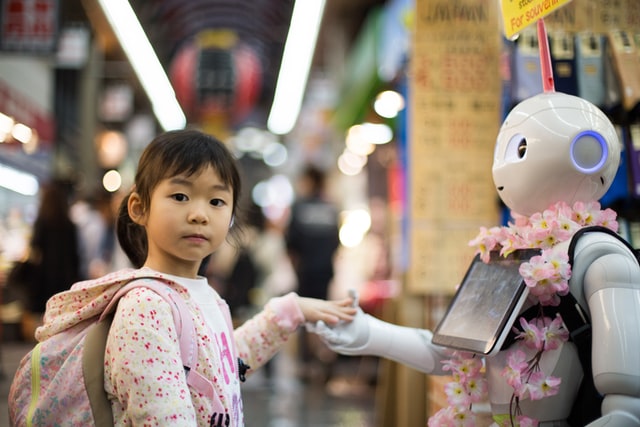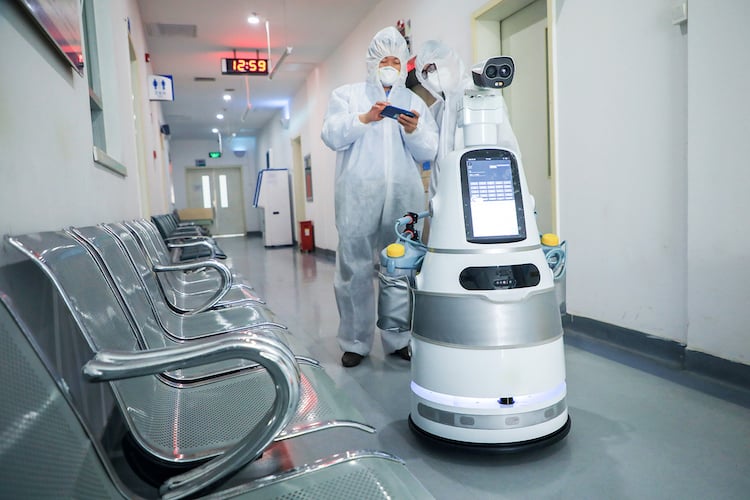Given the recent COVID-19 pandemic and its effects on traditional educational institutions, the fields of formal education are headed for a systematic change. Robotics and artificial intelligence technologies can not only mitigate difficulties caused by the pandemic but also help build on their foundations.
 Photo by Andy Kelly on Unsplash
Photo by Andy Kelly on Unsplash
By Marques Coleman
According to The New York Times, robotics will create 133 million jobs by 2022, with robot sales estimated at 553,000 units by the end of 2020. As such, the integration of robotics into K-12 and higher education can enhance future career development prospects of students with access to robotics during the curriculum.
What are the ways in which robotics have become essential for teaching in the post-COVID-19 world? How can teachers take full advantage of the technology’s possibilities to further their goals as mentors in formal education?
Social Distancing Norms
First and foremost, robotics can ensure that all students remain healthy throughout their curriculum, given the social distancing guidelines by the World Health Organization. Students with prior experience in formal education are likely to have difficulties in adjusting to new distancing and health regulation norms. Specialized COVID-19 health robots, as featured by RobotLAB, can mitigate the inevitable dangers of group studying.
Integrating such AI-driven technology to a classroom can help identify potential virus carriers, educate students on current safety regulations, and help disinfect them in schools. Coupled with writing tools such as Evernote, Subjecto, and Hemingway Editor, they can be used to educate students on how to follow official health guidelines. Robotics has found a way to successfully alleviate the problems most schools face in terms of following general safety guidelines and have thus become essential.
Creative Programming
Given the increased focus on IT-centric industries and their rapid development, robotics integration can help educate students on the basics of programming. Courses such as Graphical and Python Programming using NAO are centered on enabling students to meet the demands of contemporary job markets in creative ways.
Such additions can enhance K-12 education and expand its traditional curriculum to include hands-on learning via robotics. Teachers can take full advantage of such courses to facilitate creative exercises, teamwork-based projects, and practical learning. Young students are bound to be engaged by programming-based robotics exercises far more than by traditional curriculum, creating a healthy balance between the two.
Native Gamification Integration
Speaking of engagement, today’s K-12 and higher education students are bound to be dependent on smart devices for day-to-day activities. According to Time, compared to 2019, gaming hardware spending grew by 63%, while software spending grew by 34% in 2020, opening doors for classroom gamification.
Why not take full advantage of the fact and introduce engaging gamification via robotics to the classroom? Gamification is a simple process of introducing points, perks, and achievements for students based on their individual or group performance. With robotics, such a system can be easy to keep track of and allow teachers plenty of room for creative exercises and rewards.
Development of Future Competencies
The current COVID-19 crisis is bound to bolster the presence and rapid development of robotics throughout multiple industries. According to Tech Jury, 88% of businesses plan to integrate robotics into their workflow, with collaborative robots accounting for 34% of robot sales by 2025. This opens the doors for today’s students to find their passion for robotics early on if the technology is present in their classrooms.
Samantha Sinclair, Head of Business Development at Grab My Essay and Content Writer at Top Essay Writing, said that: “Robotics integration is inevitable. Whether you outsource services via cloud or work to write and publish online content, AI is bound to find its way into your industry sooner or later. As such, developing related skills early on can increase the odds of good post-graduation employment and career development for today’s students.”
Practical Exercise Simulations
As guest teachers and outside instructors become unavailable due to COVID-19, robots can fill the gap and introduce practical exercises and simulations to the classroom. Robots which are enabled to showcase modern AI technologies and enable students to practice in a controlled environment can do wonders for the curriculum.
The AI Lab program by RobotLAB is a good example of what this initiative has to offer. A competent teacher with the know-how of each student’s sensibilities can serve as a bridge between AI and students in his or her classroom. Exposing students to robotics with practical exercises based around future AI implementation in society can significantly improve the end-result for K-12 and higher education students.
Special Education Enhancements
The post-COVID world will affect different students in various ways, and those with special needs should not be ignored. Given the specific needs of students on the ASD spectrum and those with other needs in education, robotics can be used to improve their schooling. According to Single Care, 53% of children with ASD have attention deficiency, while 51% also exhibit anxiety in the face of contemporary schooling scenarios. In many ways, robotics can help make these students’ education far better than it was prior to the COVID-19 crisis.
Robotics designed with special education students in mind also offer conversational exercises and features created to allow for graduate, systematic learning without cutting corners. Specialized robotics designed with these students in mind can help teachers to better individualize class curriculums and assist students in achieving their academic goals.
Redefining the Norm (Conclusion)
No one can tell for certain what the world will be like by the end of 2020 and beyond. However, we can safely say that STEM fields will remain sought after both in the job market and academia, given their global omnipresence.
Teachers can pitch in and help students transition to the new norm with contemporary robotics and educational AI solutions. Such technology can only augment current educational systems and enable students to better prepare for the job market of tomorrow. While it may be difficult to break the ice, teachers will soon find out that robotics is a valuable addition to their teaching arsenal.
Discover more Technological COVID resources with RobotLAB!

Authors Bio: Marques Coleman is a professional writer, editor, and AI aficionado in close collaboration with Trust My Paper and Best Essays Education writing services.
Marques has dedicated his career to research and publishing about fields of digital marketing, artificial intelligence, and Big Data, which he explores through writing contributions. He is a content creator and editor for by EssayAssistant and Classy Essay writing platforms, rounding out his career portfolio as an online writer. In his spare time, Marques enjoys swimming and listening to his vinyl records.


